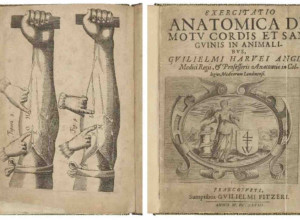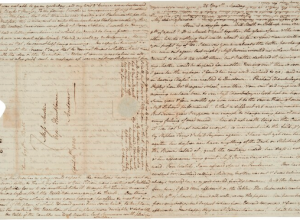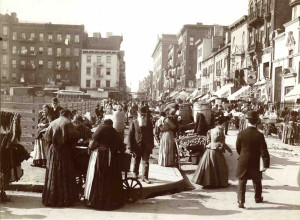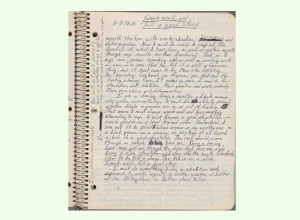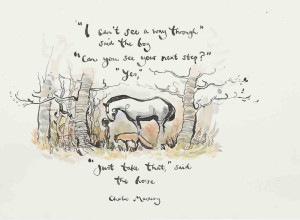Guest Blog: Identifying First Editions with McBride's Guide
Identifying First Editions with McBride's Guide
Reviewed by Bill Butts
The greatest fear of novice collectors is not being able to correctly identify a book's edition. This can lead to costly mistakes or can cause you to pass up an underpriced bargain. The vast majority of noncollectors are under the impression that a first edition is identified by those two words on the copyright page. Sometimes this is indeed the case, often not. Pitfalls abound. Not only are there many methods of indicating edition, many of them cryptic, but publishers often switch from one method to another, apply them inconsistently or otherwise complicate matters to confound collectors.
 Bill McBride's A Pocket Guide to the Identification of First Editions - the seventh, revised edition of a booklet first published in 1979 - is the remedy. This handy "cheat sheet" has been a mainstay of booksellers for three decades now. I've recommended the Pocket Guide to countless bibliophiles or wannabe bibliophiles. A hideous specimen held together with packing tape and good will has been within arm's reach for more than twenty years, and I keep a copy in every car's glove compartment.
Bill McBride's A Pocket Guide to the Identification of First Editions - the seventh, revised edition of a booklet first published in 1979 - is the remedy. This handy "cheat sheet" has been a mainstay of booksellers for three decades now. I've recommended the Pocket Guide to countless bibliophiles or wannabe bibliophiles. A hideous specimen held together with packing tape and good will has been within arm's reach for more than twenty years, and I keep a copy in every car's glove compartment.
McBride's Pocket Guide is an A to Z listing of 5,835 English-language publishers current and former, from A & B Publishing through Zone Books. (According to McBride, that's 2,193 more publishers listed than the 3,642 that appeared in the sixth edition - up 38% -- plus an additional 2,342 pieces of data.) A clever abbreviation system then shows each publisher's method of noting edition. The abbreviation that follow every publisher's name is explained in the key. Baylor University Press, for instance, uses "NAP," meaning "no additional printings are indicated in the book." Ross & Haines employ a straightforward "FE," meaning "words FIRST EDITION must appear on back of title page with no additional printings indicated." Rand, Avery & Co. favor "SD" - "same date must appear on title page and back of title page with no additional printings indicated." A dozen other abbreviations are used, including the popular "N" ("a sequence of numbers... must appear on the back of the title page with the '1' present") and "L" ("a sequence of letters... must appear on the back of the title page with the 'a' present") and the unfortunate "No designation" - yes, there are publishers for whom "no consistent way to determine one printing from another exists." But despite these general rules, exceptions do abound, and the Pocket Guide spells out many of them. For instance, a new collector might know the number sequence system noted above, but not be aware that Random House employed it incorrectly. Their first editions always begin with the number "2," which would usually indicate a second printing - so anyone not knowing this will misidentify a true Random House first edition as a second printing. Amateur Hour mistake.
This listing is prefaced by an eight-page introduction that crams in lots of condensed bookseller gems. Neophyte collectors overlook this at their own peril. There are thumbnail discussions on the distinction between edition, printing and impression, another on the often-misunderstood distinction between issue, state and point, a must-read section on identifying book club editions, and other tidbits of wisdom to shorten the learning curve. Read, study, and repeat.
As Bill McBride notes in his introduction, "The most useful tool in determining a first edition is an acute mind. This guide can take you only so far." Oh so true, but without books such as the Pocket Guide providing concrete data that acute mind can really be stymied. And dealers need it just as much as collectors - more so, since they need to access this information far more frequently. Sure, any good dealer can normally identify most first editions without it, but this is a massive number of publishers, many of them obscure mom-and-pop presses rarely encountered. No one can memorize this mountain of minutiae.
A Pocket Guide to the Identification of First Editions is certain to be the smallest reference book on your reference shelf and probably the one you'll use the most. Any reference work that helps make better collectors gets a big thumbs up in my book!
--Bill Butts runs Main Street Fine Books & Manuscripts in Galena, IL.
McBride, Bill. A Pocket Guide to the Identification of First Editions. Hartford: McBride/Publisher, 2012. 16mo. Softbound. 142pp. $18.95.

Reviewed by Bill Butts
The greatest fear of novice collectors is not being able to correctly identify a book's edition. This can lead to costly mistakes or can cause you to pass up an underpriced bargain. The vast majority of noncollectors are under the impression that a first edition is identified by those two words on the copyright page. Sometimes this is indeed the case, often not. Pitfalls abound. Not only are there many methods of indicating edition, many of them cryptic, but publishers often switch from one method to another, apply them inconsistently or otherwise complicate matters to confound collectors.
 Bill McBride's A Pocket Guide to the Identification of First Editions - the seventh, revised edition of a booklet first published in 1979 - is the remedy. This handy "cheat sheet" has been a mainstay of booksellers for three decades now. I've recommended the Pocket Guide to countless bibliophiles or wannabe bibliophiles. A hideous specimen held together with packing tape and good will has been within arm's reach for more than twenty years, and I keep a copy in every car's glove compartment.
Bill McBride's A Pocket Guide to the Identification of First Editions - the seventh, revised edition of a booklet first published in 1979 - is the remedy. This handy "cheat sheet" has been a mainstay of booksellers for three decades now. I've recommended the Pocket Guide to countless bibliophiles or wannabe bibliophiles. A hideous specimen held together with packing tape and good will has been within arm's reach for more than twenty years, and I keep a copy in every car's glove compartment.McBride's Pocket Guide is an A to Z listing of 5,835 English-language publishers current and former, from A & B Publishing through Zone Books. (According to McBride, that's 2,193 more publishers listed than the 3,642 that appeared in the sixth edition - up 38% -- plus an additional 2,342 pieces of data.) A clever abbreviation system then shows each publisher's method of noting edition. The abbreviation that follow every publisher's name is explained in the key. Baylor University Press, for instance, uses "NAP," meaning "no additional printings are indicated in the book." Ross & Haines employ a straightforward "FE," meaning "words FIRST EDITION must appear on back of title page with no additional printings indicated." Rand, Avery & Co. favor "SD" - "same date must appear on title page and back of title page with no additional printings indicated." A dozen other abbreviations are used, including the popular "N" ("a sequence of numbers... must appear on the back of the title page with the '1' present") and "L" ("a sequence of letters... must appear on the back of the title page with the 'a' present") and the unfortunate "No designation" - yes, there are publishers for whom "no consistent way to determine one printing from another exists." But despite these general rules, exceptions do abound, and the Pocket Guide spells out many of them. For instance, a new collector might know the number sequence system noted above, but not be aware that Random House employed it incorrectly. Their first editions always begin with the number "2," which would usually indicate a second printing - so anyone not knowing this will misidentify a true Random House first edition as a second printing. Amateur Hour mistake.
This listing is prefaced by an eight-page introduction that crams in lots of condensed bookseller gems. Neophyte collectors overlook this at their own peril. There are thumbnail discussions on the distinction between edition, printing and impression, another on the often-misunderstood distinction between issue, state and point, a must-read section on identifying book club editions, and other tidbits of wisdom to shorten the learning curve. Read, study, and repeat.
As Bill McBride notes in his introduction, "The most useful tool in determining a first edition is an acute mind. This guide can take you only so far." Oh so true, but without books such as the Pocket Guide providing concrete data that acute mind can really be stymied. And dealers need it just as much as collectors - more so, since they need to access this information far more frequently. Sure, any good dealer can normally identify most first editions without it, but this is a massive number of publishers, many of them obscure mom-and-pop presses rarely encountered. No one can memorize this mountain of minutiae.
A Pocket Guide to the Identification of First Editions is certain to be the smallest reference book on your reference shelf and probably the one you'll use the most. Any reference work that helps make better collectors gets a big thumbs up in my book!
--Bill Butts runs Main Street Fine Books & Manuscripts in Galena, IL.
McBride, Bill. A Pocket Guide to the Identification of First Editions. Hartford: McBride/Publisher, 2012. 16mo. Softbound. 142pp. $18.95.






